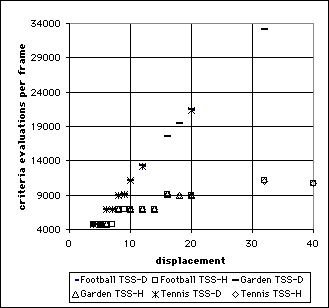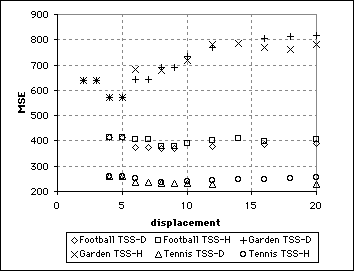Three Step Search
Two variations of the Three Step Search (
TSS) were implemented and tested. The first (TSS-D) decremented the step size at each iteration whereas the second (TSS-H) halved the step size after each iteration.
The number of matching criteria evaluated by both variations is illustrated in the graph immediately below. The TSS-H variation of the Three Step Search exhibited behaviour very similar to the Two Dimensional Logarithmic (TDL) search. This is not surprising since their methods of operation are very similar. The number of matching criteria evaluated was dependent on the displacement and not the sequence. The quality of the image sequences coded by the TSS at various displacements is illustrated in Figure 5.11. Beyond the operative range for each sequence the MSE began to increase, with the most significant rises in the Garden sequence.


